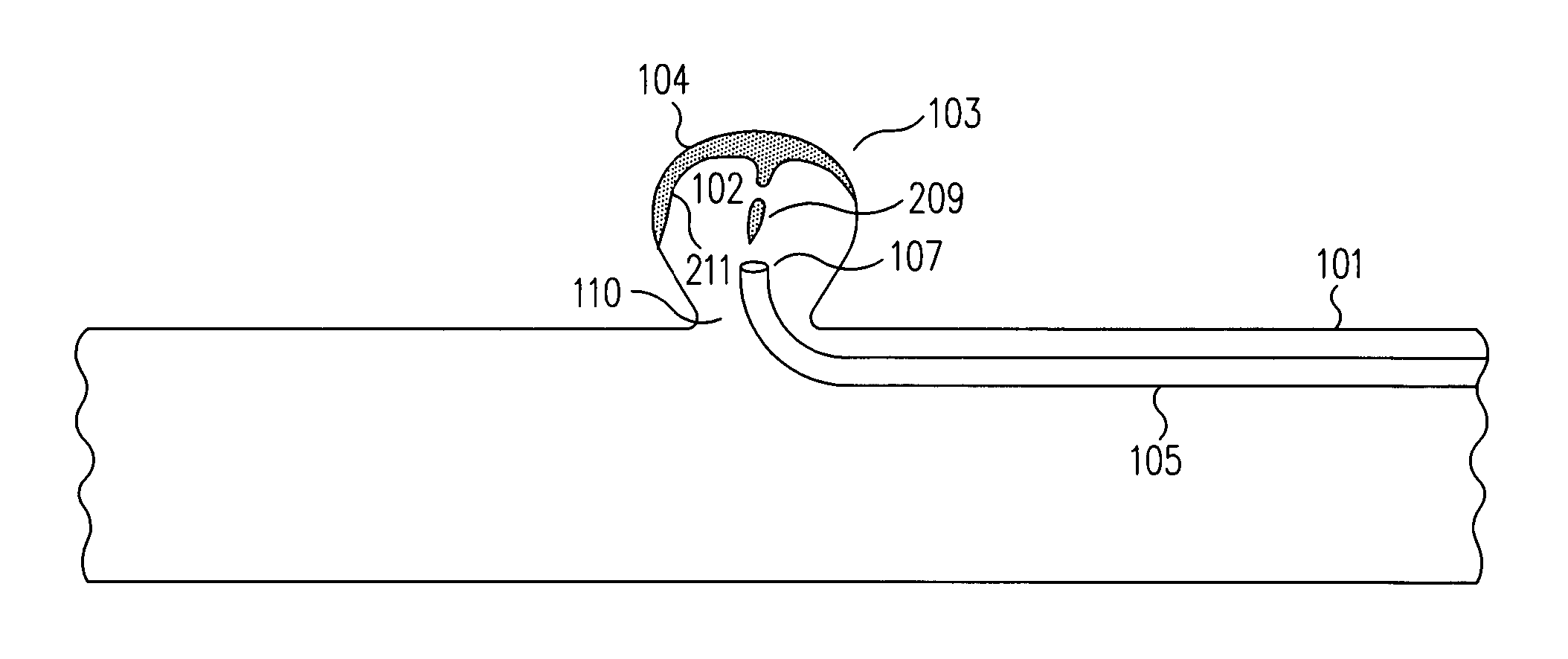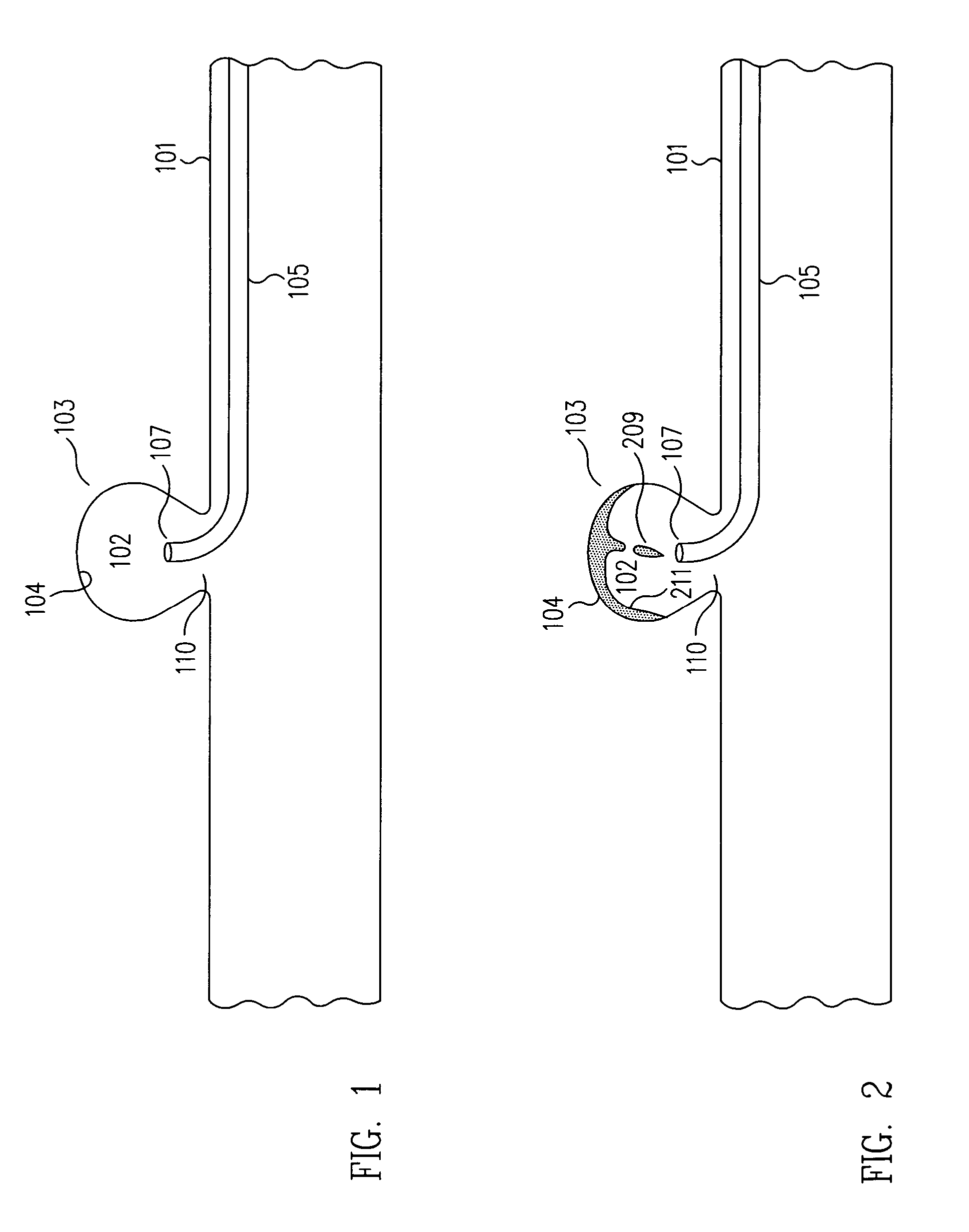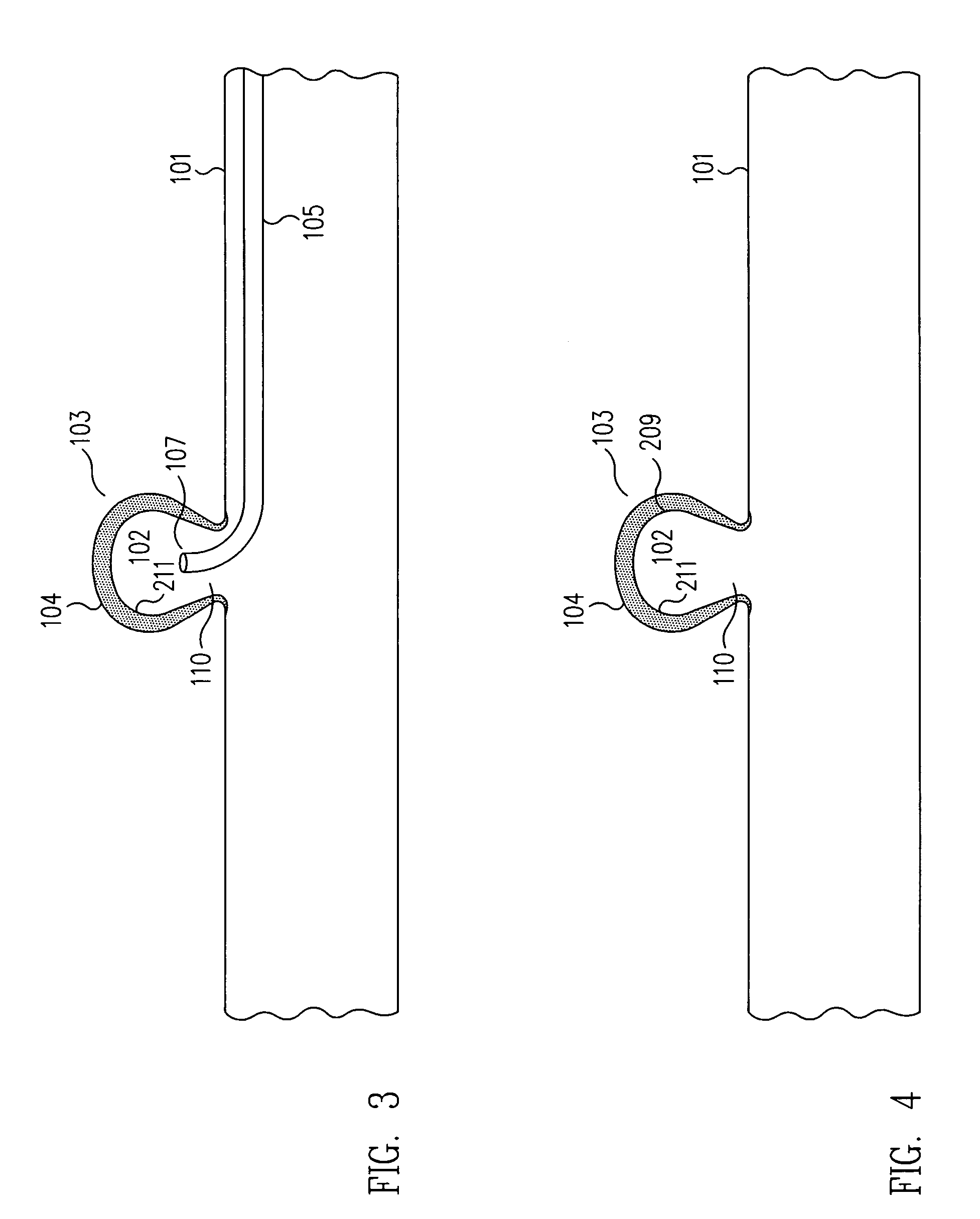Method and apparatus for aneurismal treatment
an aneurismal treatment and anesthetic technology, applied in the field of anesthetic treatment, can solve the problems of weakened arterial walls, prone to fatal aneurysms, and prior art coil insertion methods suffered from several drawbacks, so as to reduce neurological effects, reduce the risk of rupture, and strengthen the aneurysm wall
- Summary
- Abstract
- Description
- Claims
- Application Information
AI Technical Summary
Benefits of technology
Problems solved by technology
Method used
Image
Examples
Embodiment Construction
[0042]In embodiments in accordance with the present invention, the inner surface area of an aneurysm (103 in FIGS. 1 to 6 and 803 in FIGS. 8 to 14) is forced to contract thereby shrinking the aneurysm (FIGS. 5, 6, 16 and 17). Consequently, using the method according to the invention, the artery wall is strengthened, the risk of rupture is decreased, and at least a partial cure for the expansion of the arterial wall at the aneurysm site is provided.
[0043]In one example, an irritant (209 in FIGS. 2, 3, 4, 5, and 6) is provided to force the contraction of the aneurysm (103 in FIGS. 1 to 6). A micro-catheter (105 in FIGS. 1, 2 and 3) is inserted into a patient's parent artery or vessel (101 in FIGS. 1 to 6) and positioned at the aneurysm site with the micro-catheter lumen (107 in FIGS. 1, 2 and 3) in the aneurysm. Once the micro-catheter and micro-catheter tip and lumen are properly positioned, an irritant (209 in FIGS. 2, 3, 4, 5, and 6), typically in serum form, is dispensed into the ...
PUM
| Property | Measurement | Unit |
|---|---|---|
| diameters | aaaaa | aaaaa |
| size | aaaaa | aaaaa |
| temperature | aaaaa | aaaaa |
Abstract
Description
Claims
Application Information
 Login to View More
Login to View More - R&D
- Intellectual Property
- Life Sciences
- Materials
- Tech Scout
- Unparalleled Data Quality
- Higher Quality Content
- 60% Fewer Hallucinations
Browse by: Latest US Patents, China's latest patents, Technical Efficacy Thesaurus, Application Domain, Technology Topic, Popular Technical Reports.
© 2025 PatSnap. All rights reserved.Legal|Privacy policy|Modern Slavery Act Transparency Statement|Sitemap|About US| Contact US: help@patsnap.com



